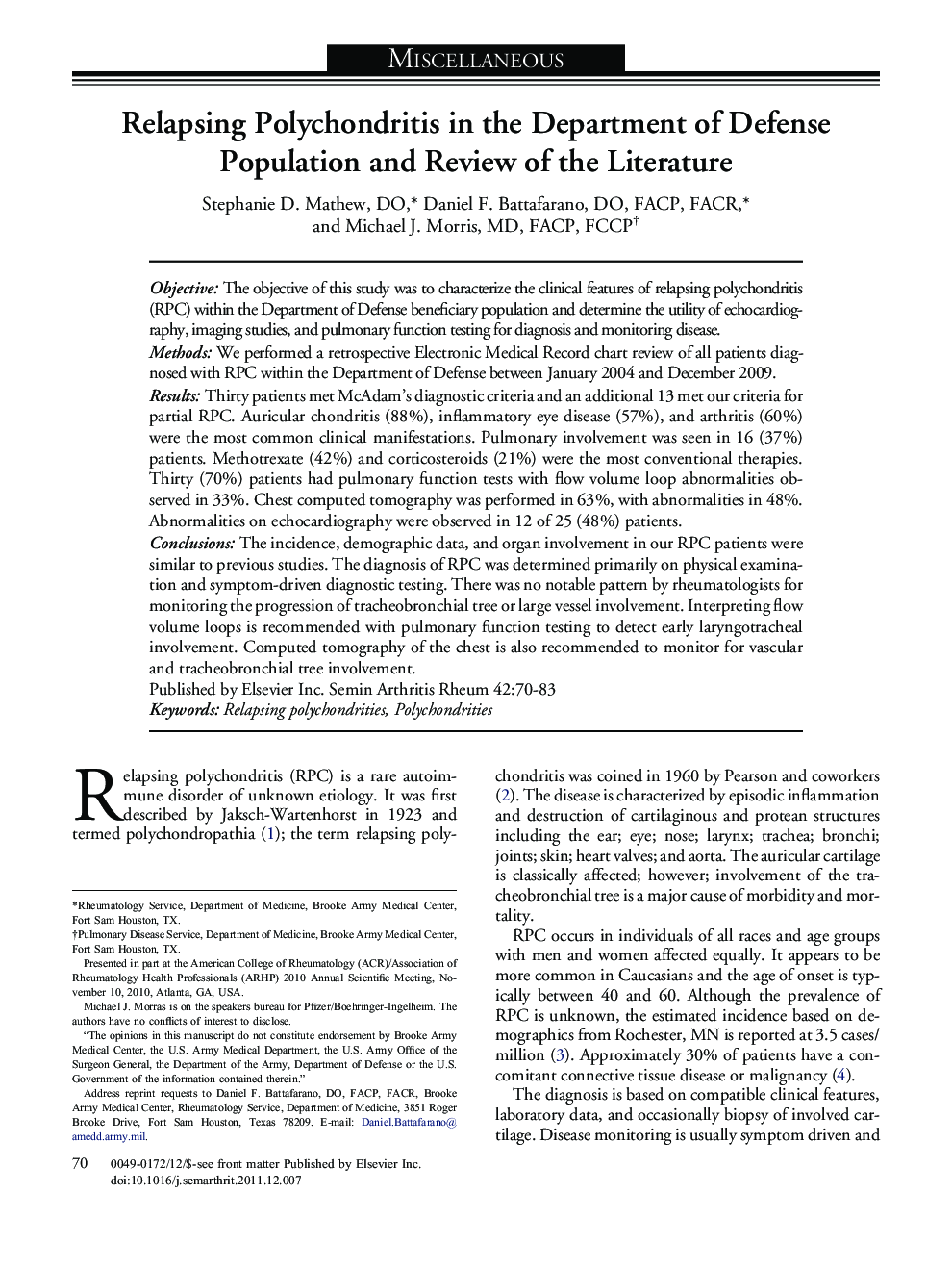| کد مقاله | کد نشریه | سال انتشار | مقاله انگلیسی | نسخه تمام متن |
|---|---|---|---|---|
| 2771549 | 1151756 | 2012 | 14 صفحه PDF | دانلود رایگان |

ObjectiveThe objective of this study was to characterize the clinical features of relapsing polychondritis (RPC) within the Department of Defense beneficiary population and determine the utility of echocardiography, imaging studies, and pulmonary function testing for diagnosis and monitoring disease.MethodsWe performed a retrospective Electronic Medical Record chart review of all patients diagnosed with RPC within the Department of Defense between January 2004 and December 2009.ResultsThirty patients met McAdam's diagnostic criteria and an additional 13 met our criteria for partial RPC. Auricular chondritis (88%), inflammatory eye disease (57%), and arthritis (60%) were the most common clinical manifestations. Pulmonary involvement was seen in 16 (37%) patients. Methotrexate (42%) and corticosteroids (21%) were the most conventional therapies. Thirty (70%) patients had pulmonary function tests with flow volume loop abnormalities observed in 33%. Chest computed tomography was performed in 63%, with abnormalities in 48%. Abnormalities on echocardiography were observed in 12 of 25 (48%) patients.ConclusionsThe incidence, demographic data, and organ involvement in our RPC patients were similar to previous studies. The diagnosis of RPC was determined primarily on physical examination and symptom-driven diagnostic testing. There was no notable pattern by rheumatologists for monitoring the progression of tracheobronchial tree or large vessel involvement. Interpreting flow volume loops is recommended with pulmonary function testing to detect early laryngotracheal involvement. Computed tomography of the chest is also recommended to monitor for vascular and tracheobronchial tree involvement.
Journal: Seminars in Arthritis and Rheumatism - Volume 42, Issue 1, August 2012, Pages 70–83